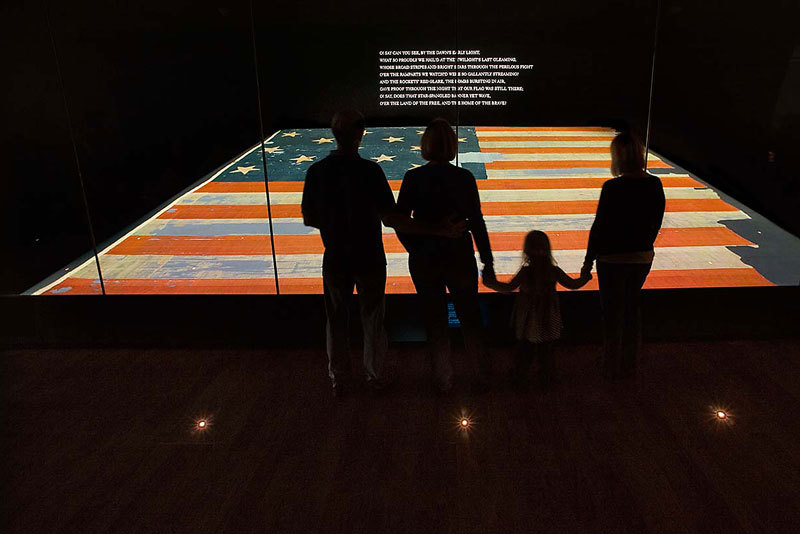Recounting history can be one of the most challenging tasks to take on. One must consider from whose point of view to tell it, what research to include, what makes an event historically relevant, among many other difficult questions. The National Museum of American History takes on some of that responsibility as it follows its mission to empower people to create a just and compassionate future by exploring, preserving, and sharing the complexity of our past and to using the infinite richness of American history to help people make sense of the present and shape a more humane future.
This Smithsonian Institution, located at the National Mall in Washington D.C, has a history of 58 years:
- 1955: President Dwight D. Eisenhower signed the bill authorizing $36 million for the museum.
- 1964: The museum opened as the Museum of History and Technology
- 1980: It was renamed to National Museum of American History to better present its mission of collecting, caring, and studying objects that reflect the experience of the American people.
- 2008: Completed a 2-year $85million renovation
- 2018: Named first woman director in its 54-year-history
- Currently continuing a major project to renew the west exhibition wing
The National Museum of American History has quite impressive facilities. The building has 750,000 square feet, including a basement, three main exhibition levels, two office-collection levels, and a mechanical penthouse on the roof. 300,000 square feet are dedicated to exhibition, programming, and public space. It is home to a collection of more than a 1.8million objects that encompasses U.S History, which they preserve and share with their audience.
Very relevant to our class and to the museum’s mission, the exhibitions explore fundamental ideals and ideas—such as democracy, opportunity, and freedom—and major themes in American history and culture, from European contact in the Americas to the present day. At the heart of the museum, it is the exhibition The Star-Spangled Banner: The Flag That Inspired the National Anthem. In this experience, visitors are immersed in the Battle of Baltimore, which inspired Francis Scott Key to write his famous lyrics. The almost 200-year old, 30-by 34-foot flag is displayed in a special environmentally-controlled chamber.

Considering how difficult it is to recount historical events, the National Museum of American History has faced new challenges as we become more informed about social issues like racism, xenophobia, climate change, and the pandemic. They have revisited their practices and their role in society and created the 2020-2030 Strategic Plan through which they respond to these matters. Their work will be guided by values of accountability, care, courage, and collaboration. Their goal is to become the most accessible, inclusive, relevant, and sustainable in America by 2030.

On Friday, January 21st we will have a consultation with the Museum’s Music Curator: Krystal Klingenberg. She is a native of Washington D.C and graduated from Princeton University in 2006 with a B.A. in Anthropology with a certificate in African Studies. As of March 2021, she has a permanent position as a Curator of Music in the National Museum of American History in the division of Cultural and Community Life. Klingenberg is enthusiastic about ethnomusicology, black music of all kinds, and deeply invested in accurate portrayals of modern Africa.
For this session I have prepared the following questions:
- The 2020-30 Strategic Plan mentions the challenges of the institution as it responds to racism, xenophobia, climate change, and the pandemic. How has the institution transformed as there is increasingly more awareness of these issues in our society? What are some examples of the actions the museum has taken?
- The United States has quite a complex history, and it has caused a lot of harm in other places of the world. Does the museum take steps to raise awareness about this and to distinguish patriotism from promoting American Imperialism?
I do not think I have any personal connections to this institution. In fact, out of all the ones we have learned about, this might be the one I resonate with the least. I think this is due to the fact that I have never visited the museum, and that I am not from the United States so I do not have the same personal connection with the content. However, I believe they have an important and powerful mission that I support and feel connected to. The second question I prepared for today is because I have not always had good experiences when it comes to the recounting of American history so I would love to visit and learn more about American history and how it is communicated in the museum.
Sources:
http://www.krystalklingenberg.com/
https://americanhistory.si.edu/museum/mission-history
https://americanhistory.si.edu/exhibitions/star-spangled-banner
